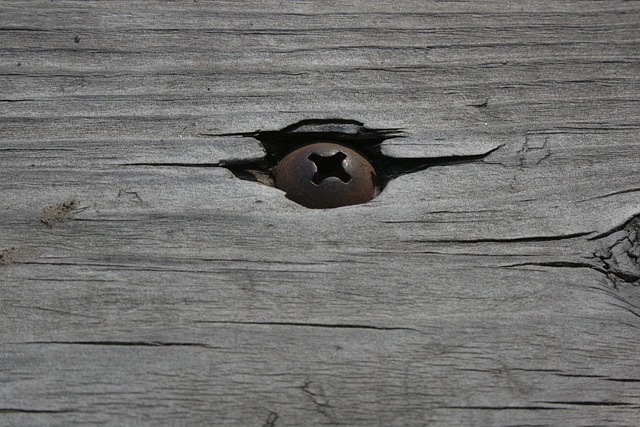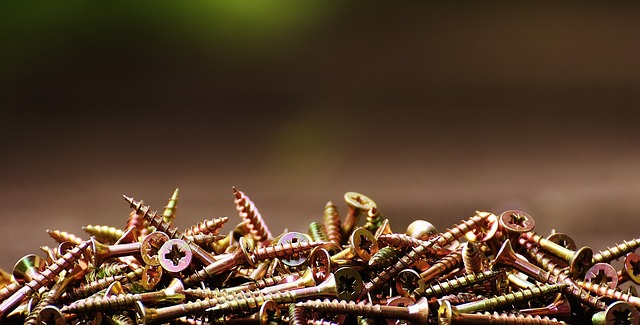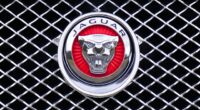Wood screws have a coarse thread and a pointed tip for gripping wood, while metal screws have a finer thread and are designed for metal materials.
TL;DR Wood screws Vs. Metal screws
Wood screws have coarse threads and a tapered point designed to bite into wood fibers, providing excellent holding power. They typically feature a flat or rounded head for countersinking and come in a wide range of sizes. Wood screws are commonly used in woodworking projects, furniture assembly, and general carpentry where securing materials to wood is necessary.
Metal screws have finer threads and a sharp point that allows them to penetrate metal surfaces easily. These types of screws often have different head shapes like pan heads or hex heads to accommodate various applications. Metal screws are widely used in construction projects, automotive repairs, electrical installations, and machinery assembly.
What are wood screws?

Wood screws, as the name suggests, are specifically designed for use with wood materials. They feature a tapered shank and sharp point, allowing them to easily penetrate and grip into wooden surfaces. One key characteristic of wood screws is their coarse threading, which provides excellent holding power in softer materials like pine or plywood.
These versatile screws come in various lengths and diameters to accommodate different woodworking projects. They typically have a slotted or Phillips head, making them easy to tighten using a screwdriver or power drill.
In addition to their unique design features, wood screws also come in different types depending on the specific application. For instance, you’ll find countersunk wood screws that sit flush with the surface once installed, while round-headed wood screws protrude slightly above the material.
Wood screws are commonly used in furniture construction, cabinetry work, decking installations, and general woodworking tasks. Their ability to securely fasten pieces of wood together makes them an essential tool for carpenters and DIY enthusiasts alike.
What are metal screws?

Metal screws are a type of fastener specifically designed for use in metal materials. Unlike wood screws, which have threads that are optimized for gripping into wood fibers, metal screws have threads that are better suited for holding onto the smooth surfaces of metals.
One key characteristic of metal screws is their durability and strength. They are typically made from harder materials such as stainless steel or hardened steel to withstand the rigors of being driven into metal without breaking or stripping.
Another important feature of metal screws is their ability to resist corrosion. Metal surfaces can be prone to rusting when exposed to moisture or certain chemicals, so it’s crucial for metal screws to be constructed with anti-corrosion properties. This ensures that they maintain their integrity and functionality over time.
In addition to these differences in design and construction, another factor that sets apart metal screws is their compatibility with different types of screwdriver heads. Common types include Phillips, slotted, hexagonal (hex), and Torx heads. The choice of screw head depends on factors such as the application requirements and personal preference.
Metal screws offer a reliable solution when it comes to fastening together various metallic components securely. Their unique features make them indispensable in industries ranging from construction and automotive manufacturing to electronics assembly and beyond
Wood screws Vs. Metal screws – Key differences
| Aspect | Wood Screws | Metal Screws |
|---|---|---|
| Thread Type | Coarse thread designed for gripping wood. | Fine thread, better suited for metal materials. |
| Tip Type | Often have a pointed or self-drilling tip. | Usually have a flat or rounded tip. |
| Material Compatibility | Designed for use with wood and wood products. | Designed for use with metal materials. |
| Fastening Application | Ideal for connecting wood pieces or attaching items to wood surfaces. | Suited for fastening metal parts, fixtures, and components. |
| Holding Power | Provide strong grip in wood due to the coarse thread. | Offer reliable holding strength when used with metal. |
| Pre-Drilling Required | Typically required when working with hardwoods. | May not require pre-drilling in softer metals. |
| Head Types | Common head types include flat, round, or oval heads. | Various head types available, including pan, flat, hex, and others. |
| Rust Resistance | Wood screws are not designed for corrosion resistance. | Metal screws may have coatings or materials that resist rust. |
| Outdoor Use | Wood screws are best for indoor or protected outdoor applications. | Metal screws are suitable for outdoor use, as they are more corrosion-resistant. |
Uses of Wood screws and Metal screws
Wood Screws:
- Woodworking and Carpentry: Wood screws are extensively used in woodworking projects, such as constructing furniture, cabinets, and wooden structures. They are designed to securely fasten wood components.
- Home Improvement: Wood screws are commonly used in DIY home improvement projects, including hanging shelves, installing trim, and assembling wooden decks or fences.
- Joinery and Framing: These screws are used in structural applications, such as framing houses, where they provide a strong and durable connection between wooden beams, studs, and boards.
Metal Screws:
- Metalworking: Metal screws are essential for various metalworking applications, including fastening metal sheets, panels, and components in construction, manufacturing, and automotive industries.
- Machinery and Equipment: They are used to assemble and repair machinery, equipment, and appliances, as they can securely fasten metal parts and components.
- Electronics and Electrical: In the electronics industry, metal screws are used to secure components, enclosures, and electrical panels, ensuring a stable and durable connection in various devices and systems.
Image Credits
Featured Image By – Alexa from Pixabay
Image 1 By – Christian LeBlanc from Pixabay
Image 2 By – Uwe Hermann, CC BY-SA 2.5, via Wikimedia Commons








